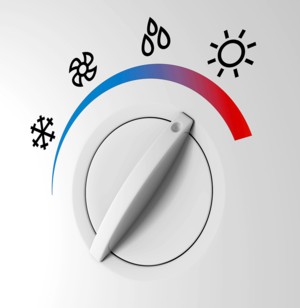
For many of us, winter is a time of hibernation. We retreat indoors, turn up the heating and treat ourselves to warming hot baths in the evening. However, with gas and electricity prices rising, this could prove to be a very expensive option, particularly if we have record-breaking cold winters as seen all around the world the last few years.
Before the winter weather really begins to bite, here are some basic tips for winter-proofing your home. The outside of a house takes a battering in the winter so a realistic assessment of its current condition is advisable — think roof, walls, floors, windows and doors. You will need to repair, seal or insulate where possible.
Winter is also the time for high gas and electricity bills as we spend more time at home and need to heat our homes to counteract the cold weather. A good way to winter–proof your bills is by comparing your current gas and electricity bills and switching to a cheaper energy source or cheaper supplier. This is also the time to consider the long term, and that means considering the green alternatives such as solar hot water and gas heating as opposed to expensive electrical heating.
Some of the best things you can do to cut down on heating costs are also some of the most simple. Make sure all of the doors in the house are closed and the weather seals on them are doing their job. Also check to make sure there aren’t any drafts coming in from cracks around the windows.
It’s no good reducing the cost of your bills if your home is draughty and not properly insulated. The biggest share of your bills is spent on heating your home, so make sure you are not wasting your heat and money.
As the temperature falls, take steps to improve both home energy efficiency and safety during the home heating season. Energy dollars can pour out of homes through drafty doors, windows, roofs, walls, floors, while safety risks go unnoticed. A small investment of time before the cold really sets in can pay big dividends in keeping your home safe and warm during the coldest months this winter. Most practical steps can pay for themselves relatively quickly with heating bill savings. Weather stripping and caulking are inexpensive and are among the simplest, most effective ways to boost efficiency and cut energy costs year round. Don’t overlook really simple energy-saving steps such as opening your curtains in the day to let sunshine warm your home, and closing them at night to keep warmth in.
As you take steps to winter proof your home, you can also inspect for electrical hazards and eliminate fire risks. As you check around outlets and other places where air can leak, also check for overloaded outlets that can often be the source of electrical fires. Approximately one-third of all house fires occur during the cold, home-heating season. Many of these winter fires can be attributed to faulty and improper use and maintenance of heating equipment. For instance, if an electric space heater is used, make sure the wiring is adequate and check for cord-fraying splitting wires, or overheating. Do not place a portable heater in high-traffic areas and keep it clear of flammables such as curtains, bedding, clothes and furniture and never use extension cords with electric heaters.
Winter home inspection
Take some time to winter-proof your home and you’ll stay warm this winter and spend less money on your heating. None of these jobs is complicated or require expert DIY knowledge and your local hardware store will also stock all you need to carry out these tasks.
Roof
Inspect the roof and replace any cracked tiles.
Ceiling
Ensure the insulation in your ceiling is in good condition.
Gutters/Drains
Clear gutters and drains of debris, ensuring they are clear as overflowing gutters can drench walls and cause damage.
Walls
Consider cavity wall insulation to keep heat in as up to 33 per cent of heat lost in the home is through the walls, so if your home is brick, check the pointing. Frost can also damage poorly maintained walls so ensure water can run off the building.
Insulation (Your ceiling)
Up to 25 per cent of your home’s heat can be lost if you don’t insulate your ceiling. You can either fit special insulating rolls yourself or get the experts in to help. The thicker the insulation, the less heat you lose.
Your hot water tank and pipes
Insulating your tank and pipes can keep your water hot for longer and prevent pipes freezing in cold weather.
Windows and doors
Sealing all the draughts around windows and doors will keep you warmer and lower the cost of your bills.
Set your thermostat
Turn your thermostat down by just one degree and you could cut your heating bills by up to 10 per cent.
Hot water
Why heat hot water and then add cold? Set the water temperature for around 60°C, which will be warm enough for bathing and washing.
Window dressing
Heat can escape through your windows, so make sure you draw the curtains or use your blinds to keep the heat in.
Layer your clothing
Lots of small, thin layers will keep you warmer than one bulky jumper. If you get too hot, just remove a layer.






